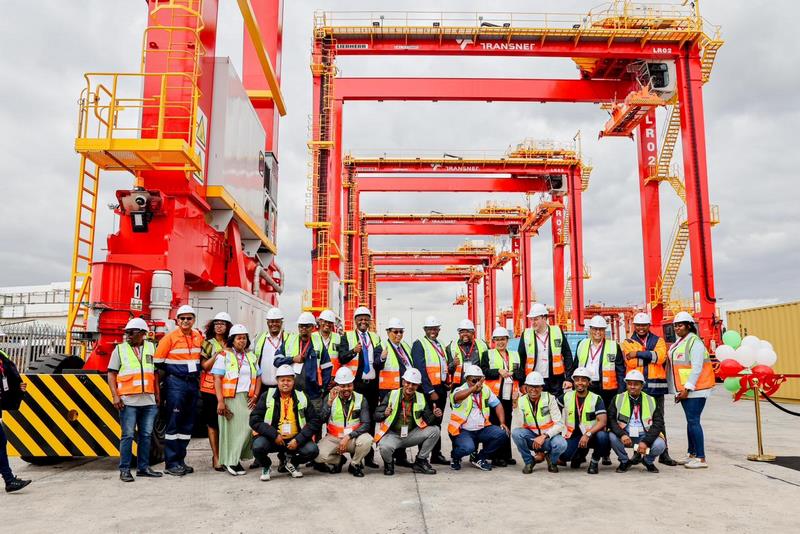The Port of Cape Town has long been a lifeline for South Africa’s agricultural exports, particularly fruit and wine. This week, that lifeline was strengthened with the launch of nine new Rubber-tyred Gantry (RTG) cranes at the Cape Town Container Terminal (CTCT). These are the first of 28 cranes acquired through Transnet Port Terminals’ R3,4 billion investment, with the remaining 19 currently being assembled.
Mayor Geordin Hill-Lewis welcomed the development, emphasising the urgency of bringing private sector management into port operations. “An efficient port is essential for job-creating growth,” he said, adding that agricultural exporters in particular stand to benefit from smoother, more reliable logistics.
New Technology, Fewer Delays
The RTGs come fitted with anti-sway systems that allow them to operate safely at wind speeds of up to 90 km/h — a significant leap from the 72 km/h limit of the old cranes. For agricultural producers, this change is critical. High winds have frequently crippled Cape Town’s port, forcing exporters of fresh fruit to reroute shipments to Durban or Gqeberha at great cost.
The new machines also feature diesel-electric hybrid engines that are cleaner and more fuel-efficient, and 3D camera systems to assist operators with precision handling. Together, these upgrades promise not only resilience against weather disruptions but also faster and safer cargo movement.
Signs of Real Progress
Unlike many infrastructure announcements that take years to bear fruit, Transnet reports that these investments are already delivering results:
- 32% increase in refrigerated container volumes between January and August 2025 compared with the same period last year.
- 24% rise in overall export volumes during the same period.
- No vessel backlogs at the terminal as of September.
These improvements directly benefit the Western Cape’s deciduous fruit industry, which sends 80% of its products through Cape Town’s port. With improved efficiency, farmers face fewer risks of spoilage and can compete more effectively in international markets where timing is everything.
Supporting Cold-Chain Logistics
Transnet has complemented the new cranes with changes to workforce and operations. A fourth shift has been added to allow true 24-hour functionality, while a performance-based incentive scheme and real-time monitoring systems have been introduced to boost productivity. For exporters of perishable produce, these reforms provide stronger assurance that cold-chain standards will be upheld.
The planned development of the Culemborg Intermodal Logistics Precinct further promises to enhance back-of-port capacity, streamlining the link between farms, cold storage, and shipping.
Shared Commitment to Growth
While the City continues to push for private sector participation to lock in long-term gains, Transnet’s Group COO, Solly Letsoalo, highlighted the progress already achieved. “There are no vessel backlogs and performance has improved considerably, not just in Cape Town, but across our terminals,” he said.
For the agricultural community, this marks a pivotal moment. After years of frustration with delays and inefficiencies, Cape Town’s port is showing signs of becoming the world-class hub that South Africa’s farmers and exporters urgently need. With new technology, expanded capacity, and better management, the sector can look forward to faster, more reliable routes to market — safeguarding livelihoods and strengthening the province’s agricultural economy.
